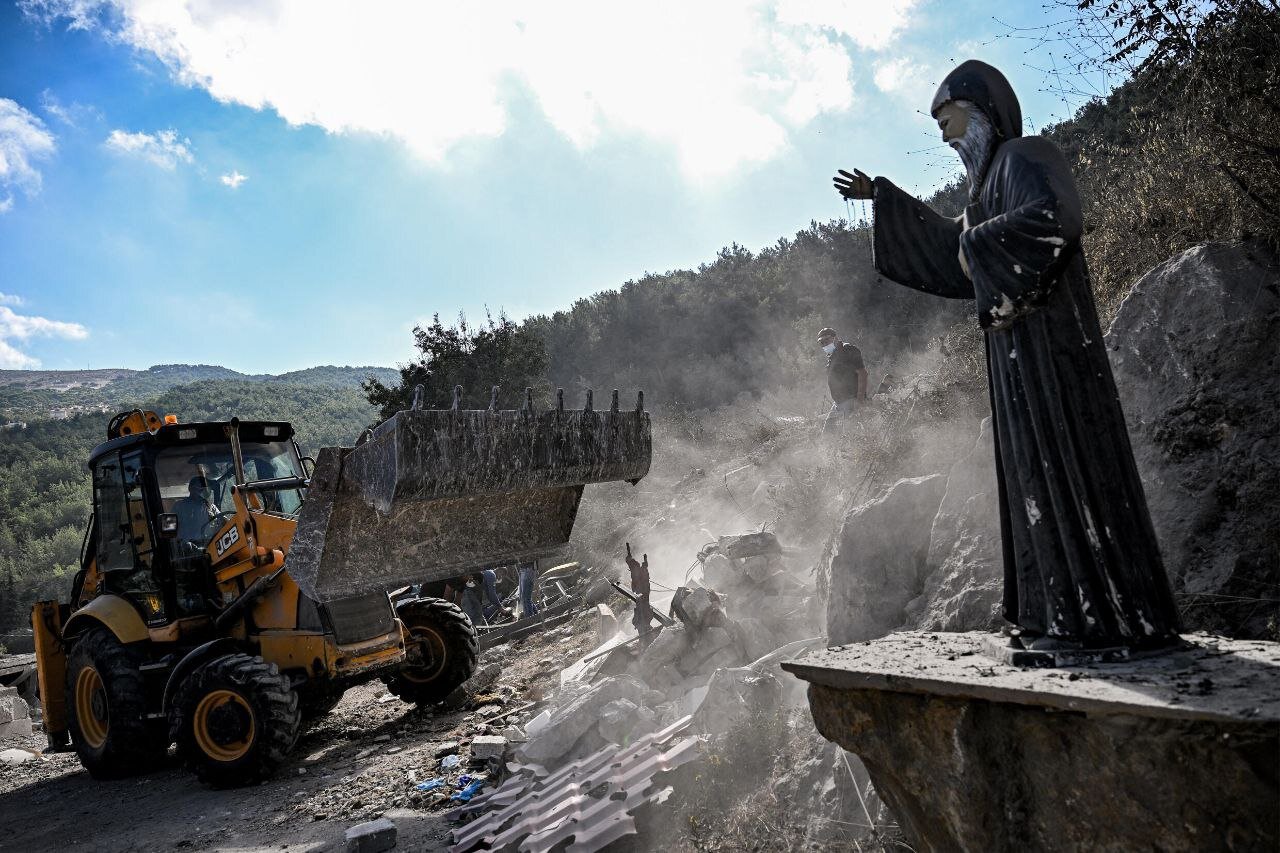Israeli motive behind deadly Lebanon strikes

TEHRAN- Over the past two weeks, question marks have been raised about the targets of Israeli airstrikes in Lebanon.
These suspicions grew when the Israeli military bombed the Christian-majority region of Aitou in north Lebanon on Monday. At least 22 people were killed, according to the Lebanese Red Cross.
The United Nations human rights office said many of the victims of the Israeli strike on a building in Aitou were women and children.
"What we are hearing is that amongst the 22 people killed were 12 women and two children," spokesperson Jeremy Laurence told a press briefing in Geneva.
"We understand it was a four-story residential building that was struck. With these factors in mind, we have real concerns with respect to IHL [international humanitarian law], so the laws of war, and the principles of distinction proportion and proportionality," he said, calling for an investigation."
It marked the first time that this particular region has been struck since October last year.
The Israeli military has not commented on the strike and it was clear that there were no Hezbollah targets in the Christian-majority town of Aitou.
With rare exceptions, northern Lebanon has been spared so far from the Israeli bombardment of Lebanon. Airstrikes have mostly focused on the Lebanese capital’s southern suburb, in some instances central Beirut but mostly on regions east of Beirut such as the Bekaa Valley and south of the Capital city.
On Tuesday night an Israeli strike on the southern village of Qana killed at least 15 civilians, Lebanon's civil defense agency has said.
Qana is in southern Lebanon and the attack brought back dark memories of the Israeli massacre of Qana during the 2006 war that killed many civilians with the majority of the victims – 15 – being young children.
On Wednesday, Israeli also bombed the municipal building of Nabatieh in southern Lebanon.
The Lebanese health ministry has said the attack killed six civilians, including the local mayor and injured 43 others. The death toll is expected to rise. But there has been no evidence of any Hezbollah target or that the building was used to store weapons.
The Israeli military has bombed more extensively than in the July 2006 war on Lebanon. This is while the invasion attempts in the south have proven to be a failure in comparison to 2006 when the Israeli occupation forces occupied much larger territory in a similar time frame.
According to experts, the Israeli military has been instructed to attack regions not just linked to Hezbollah’s support base but also areas that have absolutely nothing to do with the resistance movement.
This is despite no evidence being offered by Tel Aviv of any Hezbollah members or infrastructure being present at the places being currently bombed in Lebanon. Not even the southern Lebanese towns and villages have shown unwavering support for Hezbollah since 1982 in wide-scale street demonstrations to support the resistance movement against Israeli aggression.
Critics accuse the Israeli military of targeting civilians, destroying residential homes and other vital infrastructure as well as health services in southern Lebanon and regions east and south of Beirut, including its southern suburb of Dahieh because these are Hezbollah strongholds.
Experts say the goal is to turn the support base of Hezbollah in these regions against the Lebanese resistance by killing women and children. A similar tactic used in Gaza and the 2006 war on Lebanon.
The strategy backfired in 2006 against the Israeli regime. The support base for Hezbollah within Lebanon emerged stronger and bigger.
But does the plan to target civilians and turn the public opinion against Hezbollah by destroying their livelihoods work?
On Tuesday, a parliamentarian from the Lebanese Christian majority region of Aitou took the enemy by surprise by speaking out in support of Hezbollah and its ongoing efforts to resist the invading forces.
Leave a Comment